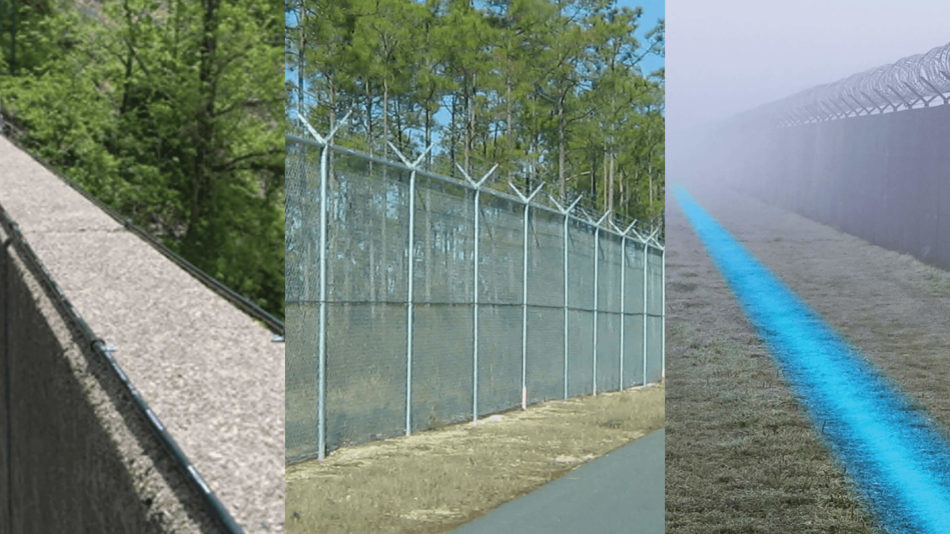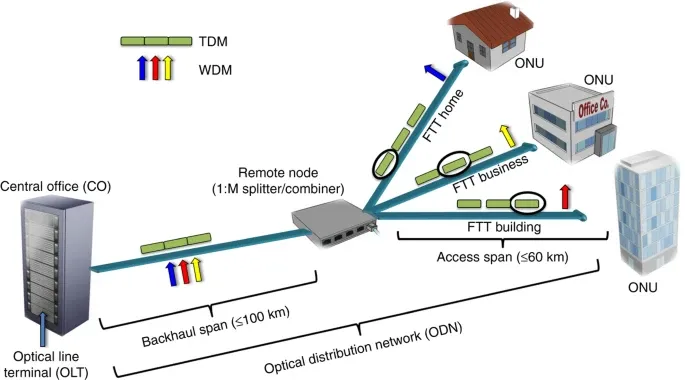Why a Fiber Optic Security System Is Essential for High-Security Facilities and Environments
Why a Fiber Optic Security System Is Essential for High-Security Facilities and Environments
Blog Article
Why Fiber Optic Safety Equipments Are the Future of Defense
The shift to fiber optic protection systems marks a substantial development in the world of defense, driven by their phenomenal information transmission abilities and durability to external interferences. As the landscape of security progresses along with emerging technologies such as AI and IoT, the possibility for fiber optics to improve and redefine security frameworks ends up being significantly evident.
Benefits of Fiber Optic Equipments
Among the main benefits of fiber optic systems is their exceptional bandwidth capacity, which helps with the transmission of large volumes of data over long distances without considerable loss. This characteristic is especially helpful for safety applications that call for the continuous monitoring and transfer of high-definition video feeds, sensor data, and various other essential information. Fiber optics can accommodate the growing needs of contemporary safety systems, making certain that information continues to be intact and dependable.
In addition, fiber optic cables are less prone to electromagnetic disturbance, which can be a significant problem in settings with different electronic tools. This resistance boosts the stability of the information being sent, thereby decreasing the threat of data violations or system failures. Furthermore, fiber optic systems are naturally a lot more safe and secure than standard copper cable televisions, as using a fiber optic line without detection is exceptionally tough.
The toughness of fiber optic cables likewise contributes to their allure. They are resistant to ecological aspects such as moisture and temperature fluctuations, lowering maintenance expenses and enhancing system durability. In general, these benefits position fiber optic systems as a durable and effective selection for contemporary security frameworks, making certain trusted and safe information transmission.
Enhanced Information Transmission Rate

The ability to send vast quantities of information promptly promotes the smooth combination of high-def video feeds and advanced analytics. Safety and security systems can currently refine and analyze details in real-time, enhancing reaction times and situational awareness. In addition, fiber optic links support longer transmission distances without deterioration of signal high quality, making them excellent for extensive safety networks.
The raised rate of fiber optic systems not only improves the performance of safety procedures yet also reduces latency. This is particularly crucial in vital circumstances where timely decision-making can avoid security violations or alleviate potential threats. As companies remain to prioritize safety and efficiency, the demand for quick and dependable information transmission will most certainly solidify fiber optic systems as a foundation of contemporary safety infrastructure.
Resistance to Interference
Fiber optic safety systems regularly demonstrate remarkable resistance to electro-magnetic disturbance, a critical advantage in atmospheres prone to digital noise. Unlike conventional copper her latest blog cables, which can be adversely influenced by magnetic fields, radio regularity interference, and other kinds of electrical disruption, fiber optic cable televisions use light to transmit data. This inherent residential property makes sure that the signals continue to be clear and unaltered, no matter bordering electronic task.
Using glass or plastic fibers in fiber optic technology develops an obstacle against interference, permitting dependable information transmission even in challenging situations such as commercial facilities, urban locations with high digital web traffic, or locations near radio towers. This particular significantly reduces the probability of signal degradation or loss, making fiber optic systems especially suitable for safety applications where honesty and precision of information are critical.
Additionally, this resistance to interference improves the total performance and integrity of protection systems, ensuring that monitoring and alert systems operate perfectly. In a globe where security is progressively endangered by sophisticated modern technologies, the resilience of fiber optic systems sticks out as a pivotal attribute, reinforcing their status as an important component of modern security framework.
Cost-Effectiveness With Time
Considerable expense financial savings can be attained in time with the application of fiber optic safety systems. While the first financial investment may seem greater compared to traditional copper-based systems, the long-term monetary advantages emerge through decreased operational and upkeep costs (fiber security). Fiber optic wires are naturally much more sturdy and less susceptible to ecological variables, which translates to decrease replacement and repair work expenses over their lifespan
Moreover, fiber optic systems call for less power to run, which additionally reduces energy expenses. Improved information transmission capabilities permit for fewer repeaters and amplifiers, decreasing equipment investment and enhancing installation processes. The scalability of these systems additionally contributes to cost-effectiveness, as companies site can increase their safety and security framework without sustaining significant extra expenditures.
Another aspect to take into consideration is the raised performance in monitoring and action capacities that fiber optics supply. Boosted real-time information transmission can result in quicker incident reaction times, possibly mitigating losses and responsibilities associated with safety violations. Altogether, the long-lasting advantages of fiber optic safety and security systems not only warrant the first expenditure yet additionally place them as an economically prudent choice for companies seeking robust security options.

Future Technologies in Security
Progressing technologies are readied to revolutionize security systems, integrating fabricated intelligence (AI) and machine knowing to improve danger discovery and feedback abilities. These developments will certainly permit security systems to examine substantial quantities of data in real-time, determining patterns and abnormalities that indicate prospective risks. This positive strategy will certainly allow much faster decision-making and more effective event feedbacks.
Additionally, the incorporation of the Net of Things (IoT) is leading the way for interconnected protection gadgets, providing detailed surveillance and surveillance. Smart sensing units can pass on details regarding ecological adjustments, while automated signals you can check here can alert safety and security workers right away of suspicious tasks.
In addition, the advancement of biometric technologies will certainly additionally reinforce safety and security mechanisms. Facial recognition, finger print scanning, and retina recognition are becoming more innovative, offering layers of verification that are challenging to bypass.
Conclusion
In final thought, fiber optic safety and security systems stand for a substantial improvement in security modern technology, providing exceptional information transmission rate, resistance to electro-magnetic interference, and long-term cost-effectiveness. As the demand for innovative safety solutions continues to grow, the integration of fiber optics with emerging innovations such as AI, IoT, and biometrics will certainly even more boost security facilities (fiber security). The combination of these technologies will certainly guarantee an extra safe and secure and responsive atmosphere, strengthening optical fiber as a foundation of future safety and security systems
Report this page